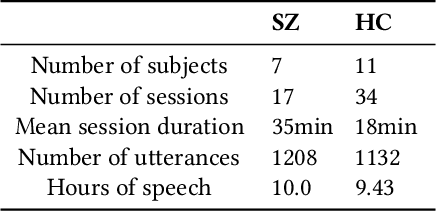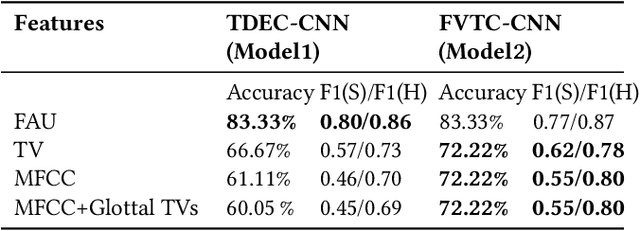Multimodal Approach for Assessing Neuromotor Coordination in Schizophrenia Using Convolutional Neural Networks
Paper and Code
Oct 09, 2021



This study investigates the speech articulatory coordination in schizophrenia subjects exhibiting strong positive symptoms (e.g. hallucinations and delusions), using two distinct channel-delay correlation methods. We show that the schizophrenic subjects with strong positive symptoms and who are markedly ill pose complex articulatory coordination pattern in facial and speech gestures than what is observed in healthy subjects. This distinction in speech coordination pattern is used to train a multimodal convolutional neural network (CNN) which uses video and audio data during speech to distinguish schizophrenic patients with strong positive symptoms from healthy subjects. We also show that the vocal tract variables (TVs) which correspond to place of articulation and glottal source outperform the Mel-frequency Cepstral Coefficients (MFCCs) when fused with Facial Action Units (FAUs) in the proposed multimodal network. For the clinical dataset we collected, our best performing multimodal network improves the mean F1 score for detecting schizophrenia by around 18% with respect to the full vocal tract coordination (FVTC) baseline method implemented with fusing FAUs and MFCCs.
 Add to Chrome
Add to Chrome Add to Firefox
Add to Firefox Add to Edge
Add to Edge